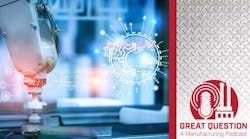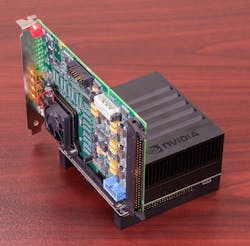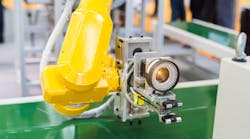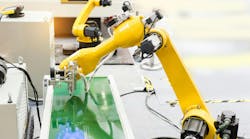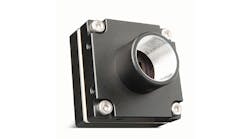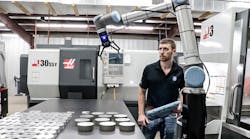Industry 4.0 is revolutionizing manufacturing as we know it. Built upon technologies integrating robotics, AI, machine learning, big data analysis, cloud computing, and sensors, this fourth industrial revolution is improving plant efficiency, increasing production stability, and minimizing operation costs.
Manufacturers have reported 10 to 12% gains in areas such as output, factory utilization, and labor productivity after they invested in Industry 4.0 initiatives. Along the way, Industry 4.0 is delivering the societal benefits of enhancing sustainability and reducing pollution.
Industry 4.0 analyzes data collected by smart sensors installed to predict outcomes and determine actions. In this eco-system, machine vision cameras act as yet another sensor in collecting visual information about the physical world, much like the sensors that capture temperature, vibration, pressure or flow speeds. Being digital, data from machine vision systems can be easily networked and shared with other sub-systems and devices throughout the plant in a cycle of continuous improvement.
What Exactly Is Machine Vision?
To better understand machine vision, let’s look at an example of how it works. In this case, we highlight its use in the automatized detection of defective products—its most common industrial application.
The process starts when a sensor detects the presence of an object on a production line, triggering a light that brightly illuminates the area. A camera takes an image of the illuminated product at a speed measured in frames per second or "fps". In most cases, a digitizing device called a frame grabber translates the image into a digital output that's then transferred and saved onto a computer.
Specialized software on the PC compares the image against a set of predetermined criteria to identify defects. If a defect is identified, the product will fail inspection, and it will be physically removed from the assembly line.
Vision systems like this can check for defects in the position of the product, its color, size or shape, or it can determine the presence or the absence of the object itself in its field of view.
Machine Vision Components
Fulfillment of the error detection process requires orderly positioning of system components for the flow of information, starting with the sensor and ending with the final processing of the image, as described above. In addition to the camera, illumination, PC, frame grabber, and software, a machine vision system requires a lens, Ethernet, fiber optic or Coaxial cabling, and various interface peripherals.
While Ethernet-based "smart" cameras are used extensively on the edge, Industry 4.0 typically demands higher imaging speeds and resolutions than smart cameras can supply. For this reason, the CoaXPress (CXP) point‐to‐point communication standard for transmitting high bandwidth data over a coaxial cable has become the de facto standard for machine vision applications. CXP carries low-latency, low-jitter images, signals, and power (Power over CXP) to the camera at up to 50 Gbps over a single cable.
Machine Vision in Industry 4.0
In the age of Industry 4.0, machine vision is expanding beyond its traditional value-adding function of error detection. Today it's being applied to diverse areas such as monitoring processes for predictive maintenance, as well as robotic guidance that makes it possible for robots to safely work with and respond to human interactions.
When combined with AI, machine vision’s uses are virtually unlimited in solving manufacturing problems. For instance, AI can empower a machine vision system with self-adjustment capabilities so that it learns from every cycle it performs in a feedback loop, growing smarter and smarter at each turn.
Machine learning can make vision systems highly proficient at making sense of large image datasets far beyond the abilities of a human. The idea of adding a self-learning algorithm to machine vision is also intriguing because vision systems traditionally work with a fixed set of rules, making them inflexible when confronted with the need for fast changes. This is important as modern production lines are designed as flexibly as possible for quick adaption to small batches of custom products, a cornerstone of Industry 4.0.
Another technology assisting machine vision's adoption in Industry 4.0 is embedded computing. Essentially, it performs analysis at the source of the data or "on the edge," rather than transmitting data over an already crowded network to servers at a secondary location, reducing bandwidth requirements.
At BitFlow, we have combined our Claxon CXP 2.0 frame grabber with the NVIDIA Jetson AGX Xavier Developer Kit, achieving a very small form factor image processing system ideal for edge computing.







